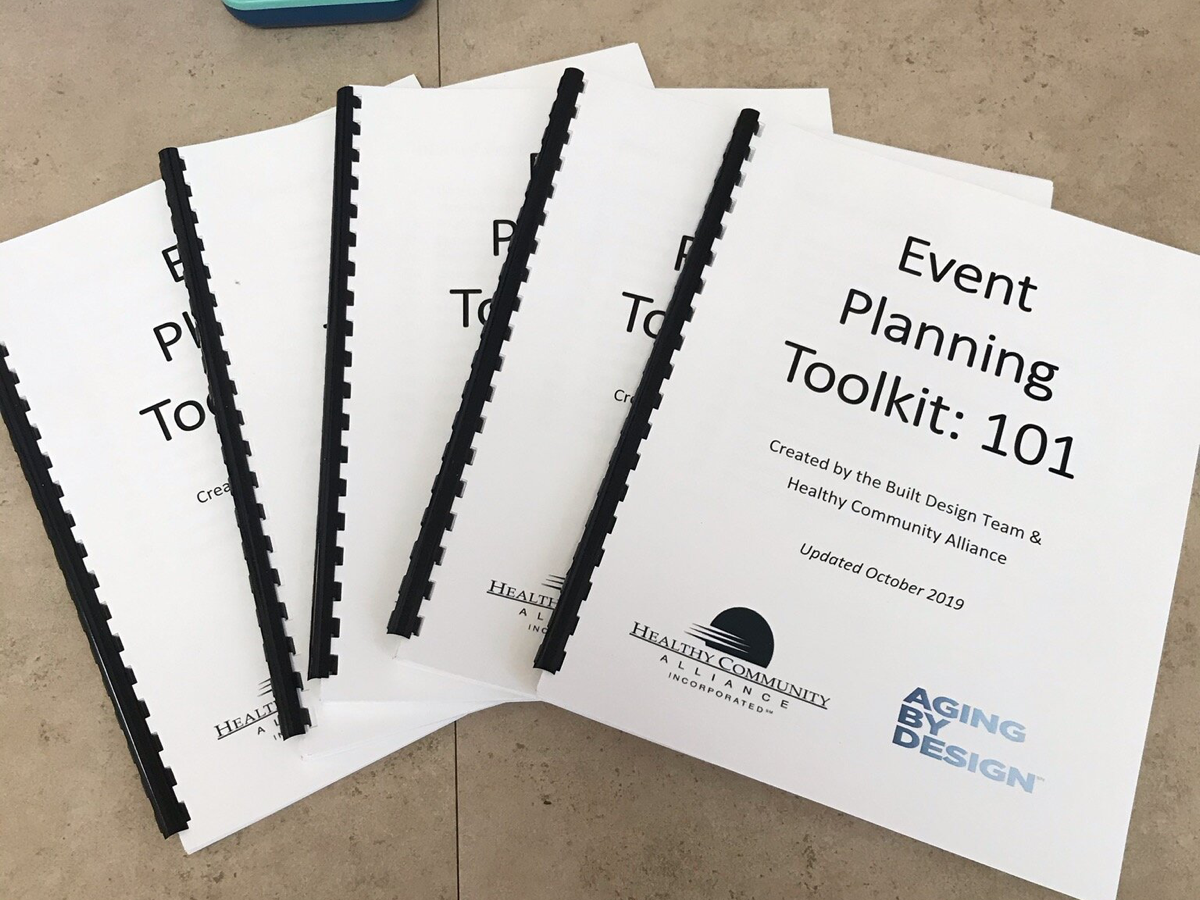 Human Centered Design prioritizes talking to and collaborating with the people who are most likely to be affected by a new program or service improvement. Aging By Design project teams work directly with clients to understand issues from their perspective. including how something looks and feels to end users and stakeholders. We take human experiences and the surrounding environment into account. Teams take steps to address a specific problem by building prototypes and gradually/continuously improving services with feedback from clients and community.
Human Centered Design prioritizes talking to and collaborating with the people who are most likely to be affected by a new program or service improvement. Aging By Design project teams work directly with clients to understand issues from their perspective. including how something looks and feels to end users and stakeholders. We take human experiences and the surrounding environment into account. Teams take steps to address a specific problem by building prototypes and gradually/continuously improving services with feedback from clients and community.

Review this post for more information on working with end users to define the problem, ideation, prototyping, and testing your proposed solution.

Healthy Community Alliance
Healthy Community Alliance is leading an Aging By Design project in Gowanda, NY (Erie County, Cattaraugus County). Academy Place is an apartment building that attracts many older adults from surrounding communities. The project team has been working on programming and physical improvements aimed at increasing social interactions among tenants.





Co-Designing Community Spaces
“Letting people choose their process, rather than imposing existing choices on them…”
The photos show examples of how the design team at Healthy Community Alliance collected feedback and ideas on a community room redesign, including having tenants draw the layout of the room.
“There’s a feeling of accomplishment. We have a beautiful sitting room upstairs now. Open the door and you can see the warmth and the inviting environment in there…it’s bright, it’s cheerful, it’s got many opportunities to do many things…books, movies, tables to play cards, whatever. It’s opportunity!”






Increasing Social Interactions | Reducing Social Isolation
The HCA team also worked with tenants to develop on a series of tenant-led social events. Originally led by program staff, the events and social groups have since been taken over by tenants. Together, they put together an events guide and instruction booklet for future tenants and staff.
“Sometimes we have trouble with trust – I do – because you get through life and you’ve been hurt. And you pull back. When we meet, it’s friendly and open and honest. And you learn to trust again.”




What do tenant-directed improvements look like?
Human-centered design has influenced the rest of the organization and its programs. The team has used the method, approach, and way of thinking to add shady areas to sit around the grounds, to improve their newsletter structure/content, and to make it easier to manage the on-site food pantry (i.e. Country Store).
“It felt really good to be a part of it, because we were able to give our opinion freely on what matters to us….but when we were involved in this, we were part of a team that was going to make a difference. And it did make a difference.”
Rose’s Story – Living in a Rural Area
ABD partners Rise Collaborative spent time with older adults living in Gowanda. The team wrote a story and made a video interview with Rose, one of the tenants at Academy Place Apartments
“When we did a project about chronic disease, we spoke with younger people and really came to a realization that we have so much in common. We’re all facing debt, we’re all encountering health issues, we all want the same good things for our families. It’s really easy to think ‘Well, I don’t have anything in common with those old people (or those young people.’ But we really have so much in common, and so much to talk about.”
In their own words…
Listen to the audio clip below and watch the video to hear what participants and staff involved in Aging By Design are saying about the approach, and the impact on their lives.

For more information on Healthy Community Alliance and their Aging By Design work, click the image. This document shares an overview of the key project activities, outputs and outcomes, and the short-term and long-term benefits to participants and the organization.
For more information on Aging By Design, please visit agingbydesign.info



